Crucial P5 1TB Performance Testing
We are moving towards using larger test sizes on our benchmarks, but on several tests, we also used the smaller default test sizes. This allows us to see the difference between lighter and heavier workloads.
BlackMagic Disk Speed Test
This is a popular speed test in the video community. It shows whether a storage device is suitable for throughput required at a given video format.
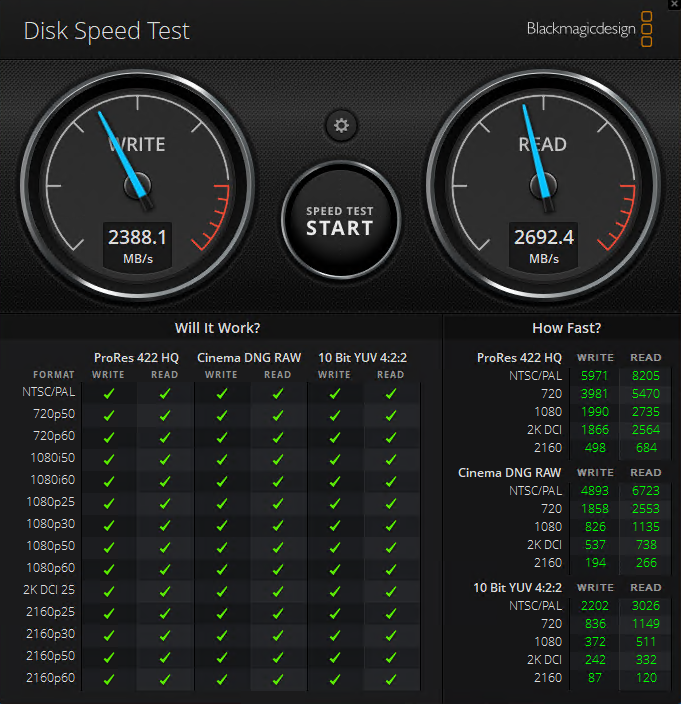
The Crucial P5 1TB easily qualifies for all the formats on this test.
CrystalDiskMark 7.0.0 x64
CrystalDiskMark is used as a basic starting point for benchmarks as it is something commonly run by end-users as a sanity check.
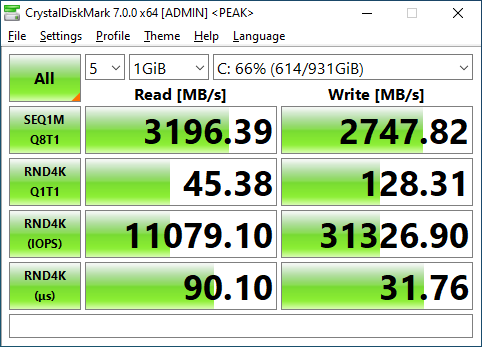
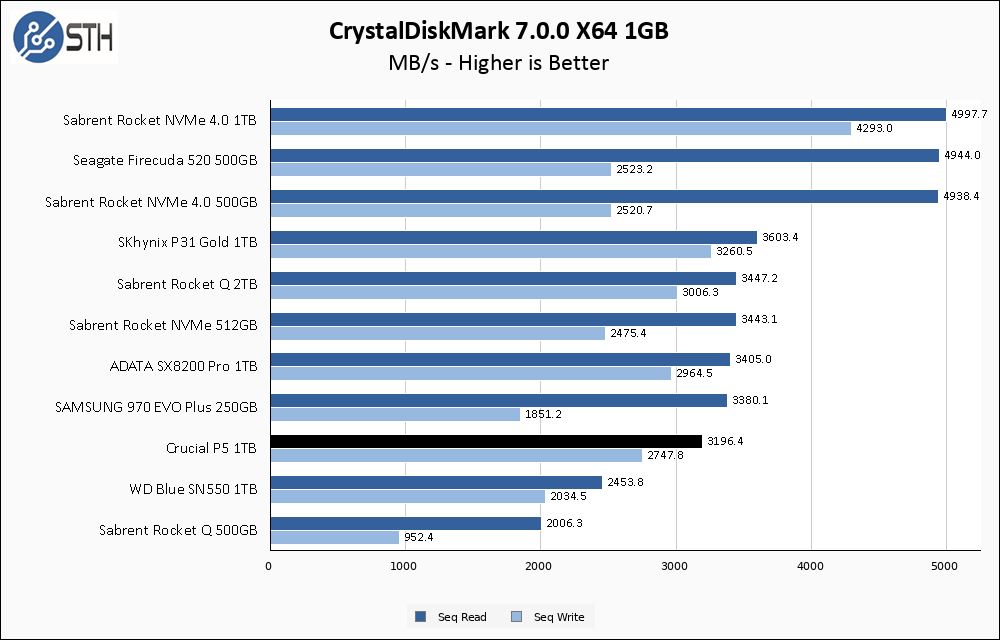
Using the 1GB test set, the Crucial P5 1TB does not quite match the advertised speeds of 3400 MB/s read and 3000 MB/s write. It is relatively close on both but falls just short. As a result, it sinks closer to the bottom of our performance chart, though still outpacing the lower-spec WD Blue SN550 drive.
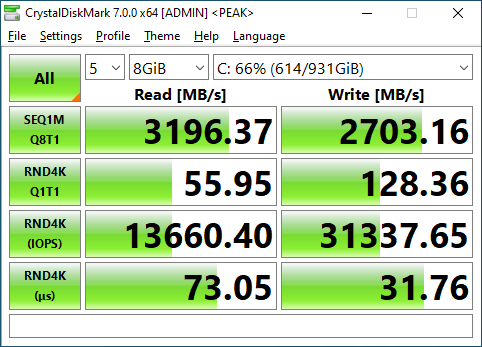
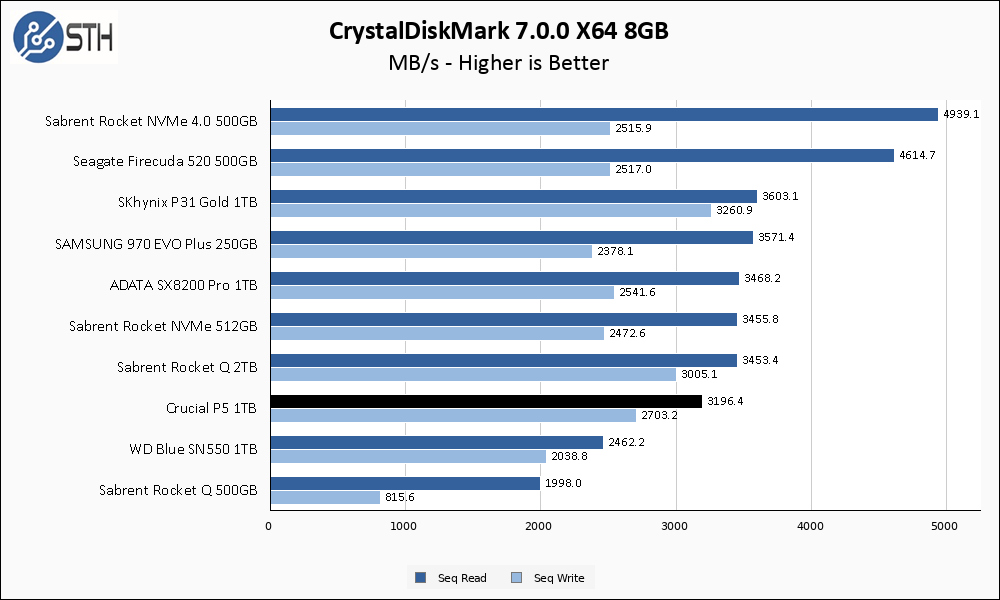
Despite still not meeting its rated speeds, a positive note for the Crucial P5 1TB is that the move to the larger benchmark set has a negligible effect on the performance.
ATTO Disk Benchmark
The ATTO Disk Benchmark has been a staple of drive sequential performance testing for years. ATTO was tested at both 256MB and 8GB file sizes.
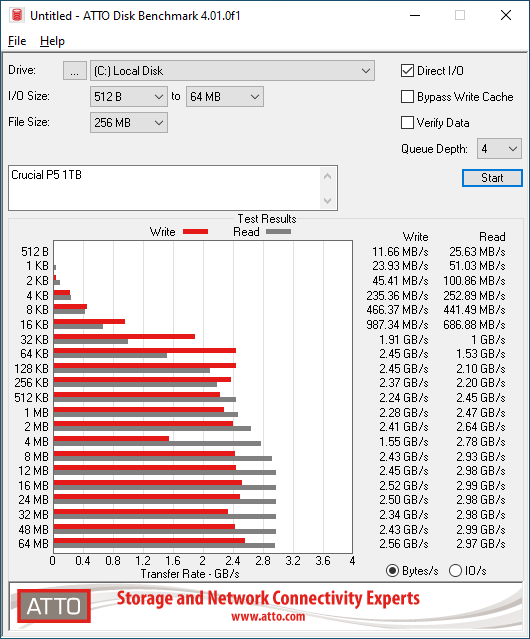
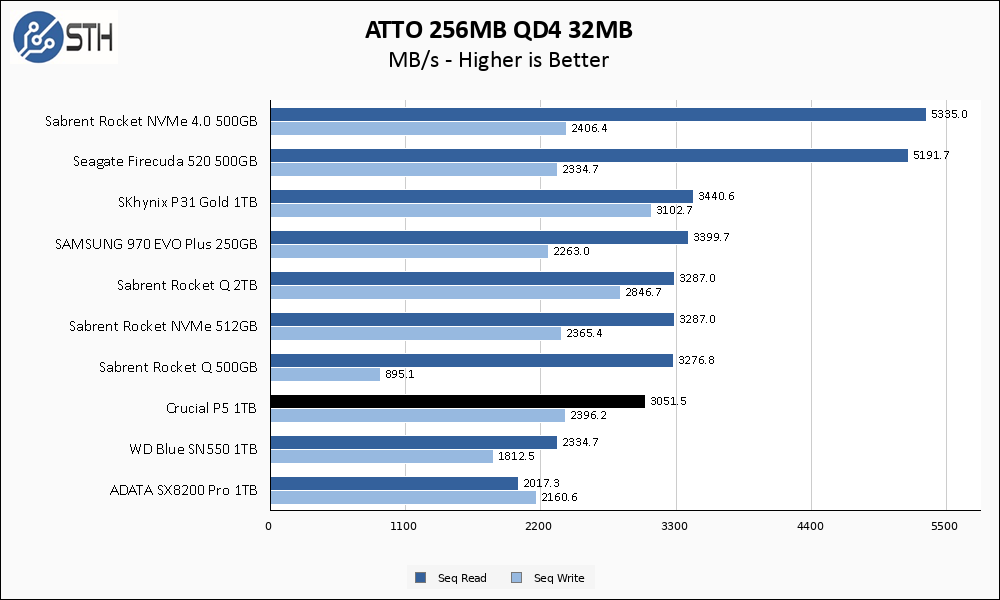
The Crucial P5 1TB continues the trend of slightly lower than advertised performance. Despite that, overall the drive still manages to outpace both the ADATA XPG SX8200 Pro and the WD Blue SN550 drives.
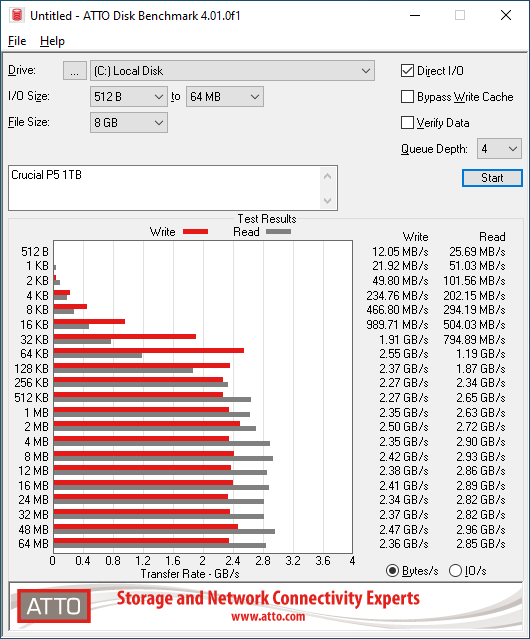
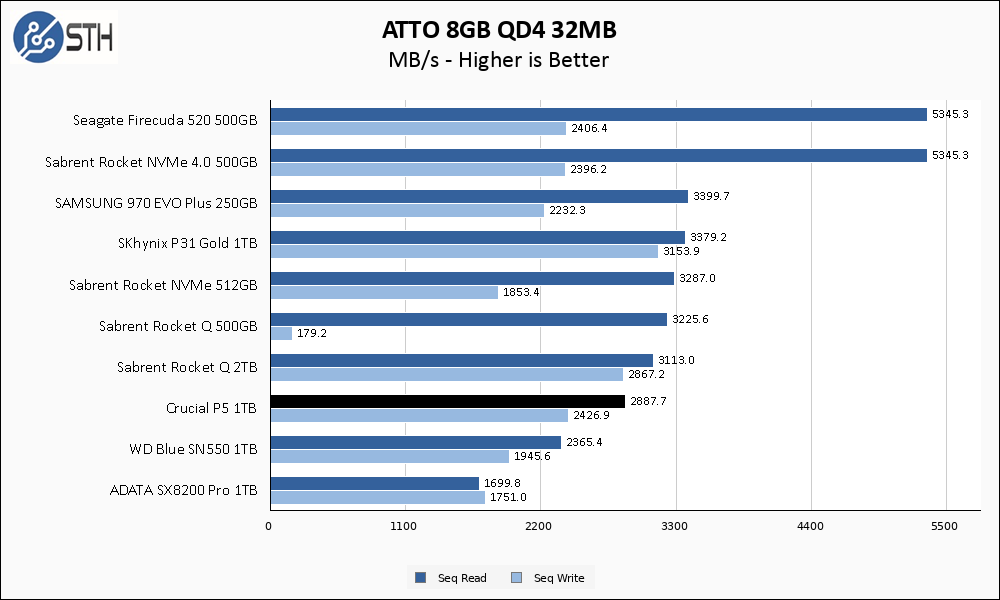
Much like in CrystalDiskMark, the larger 8GB ATTO test set barely affects the Crucial P5 1TB.
Anvil’s Storage Utilities
Anvil’s Storage Utilities is a comprehensive benchmark that gives us a very in-depth look at the performance of drives tested. This benchmark was run with both a 1GB and 8GB test size.
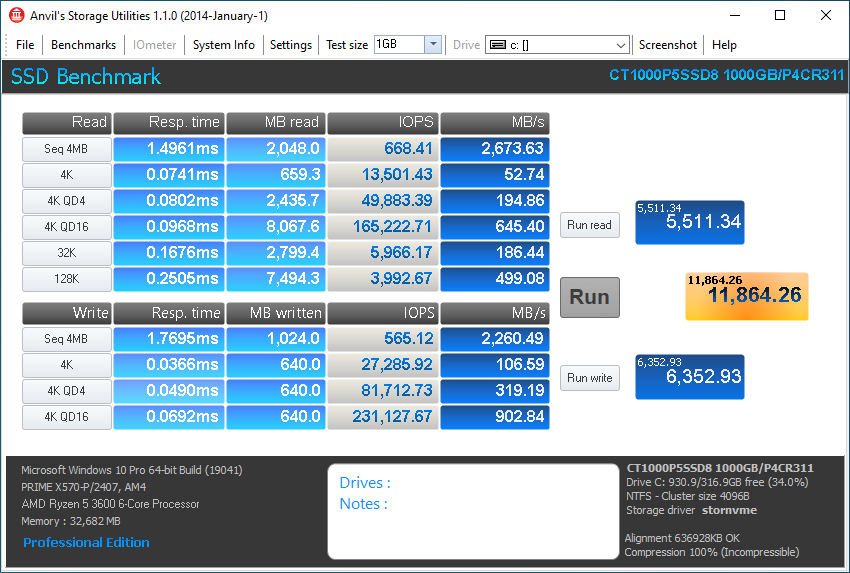
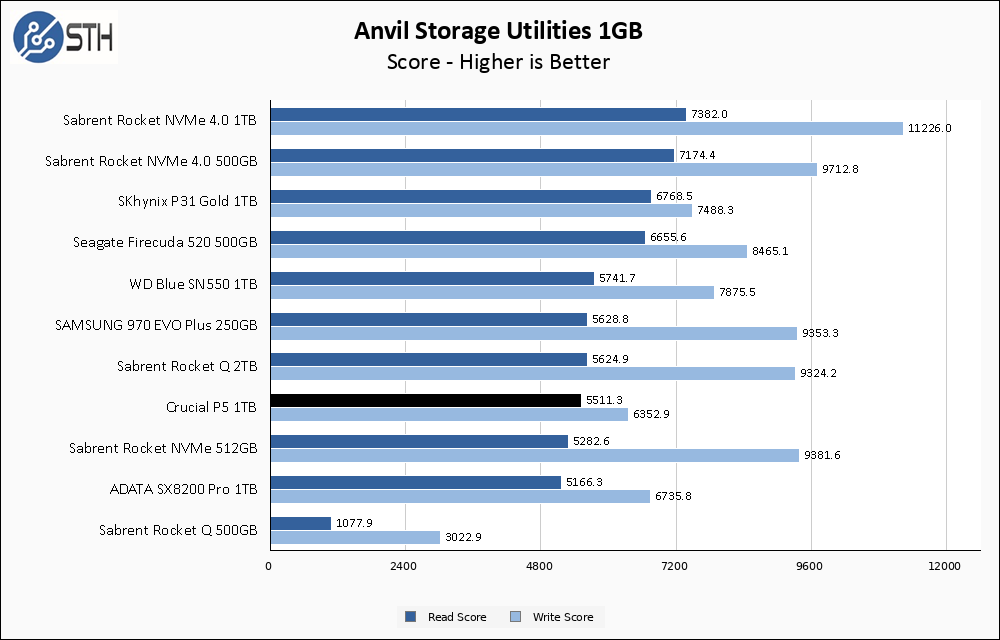
With Anvil running a 1GB test size, the Crucial P5 1TB notches a win in the read score versus the ADATA SX8200 Pro, while at the same time losing in the write score category.
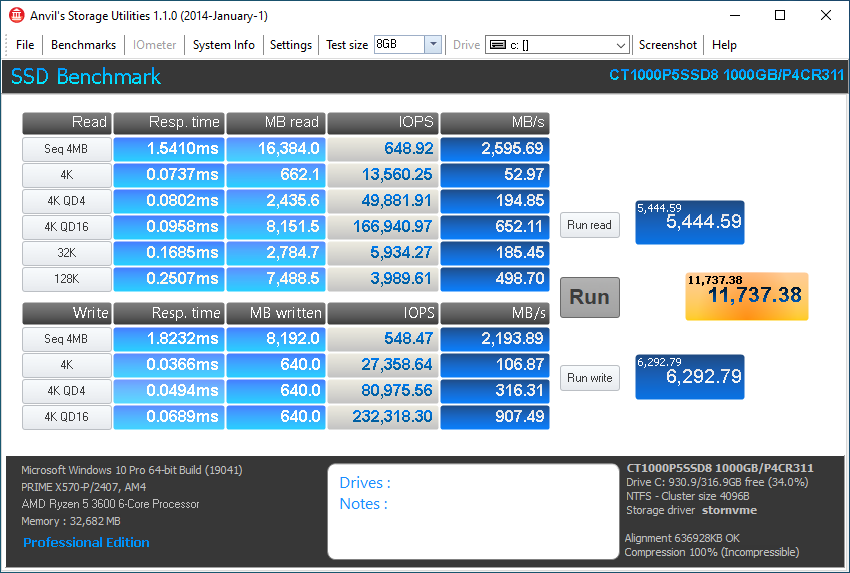
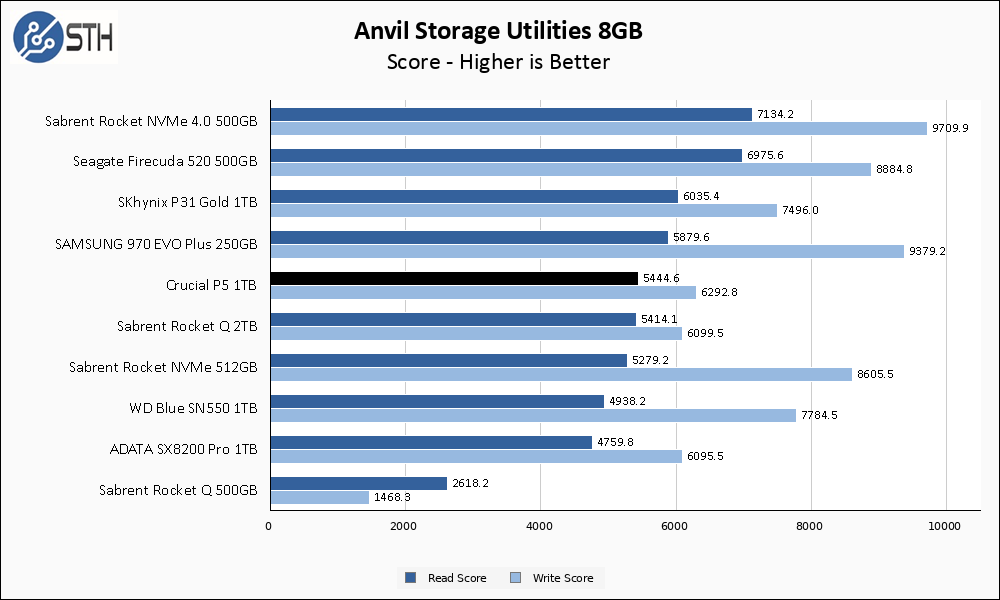
With 8GB test size, Crucial P5 1TB drive continues its trend of tolerating the larger test sets without losing much of a step. Some of the other drives in our chart do not fare as well, allowing the Crucial drive to move several slots up.
AS SSD Benchmark
AS SSD Benchmark is another good benchmark for testing SSDs. We run all three tests for our series. Like other utilities, it was run with both the default 1GB as well as a larger 10GB test set.
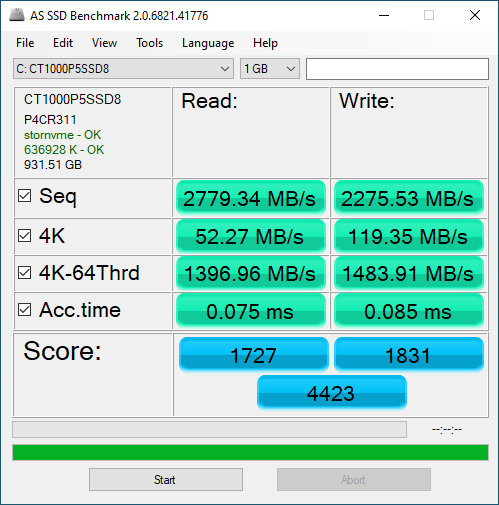
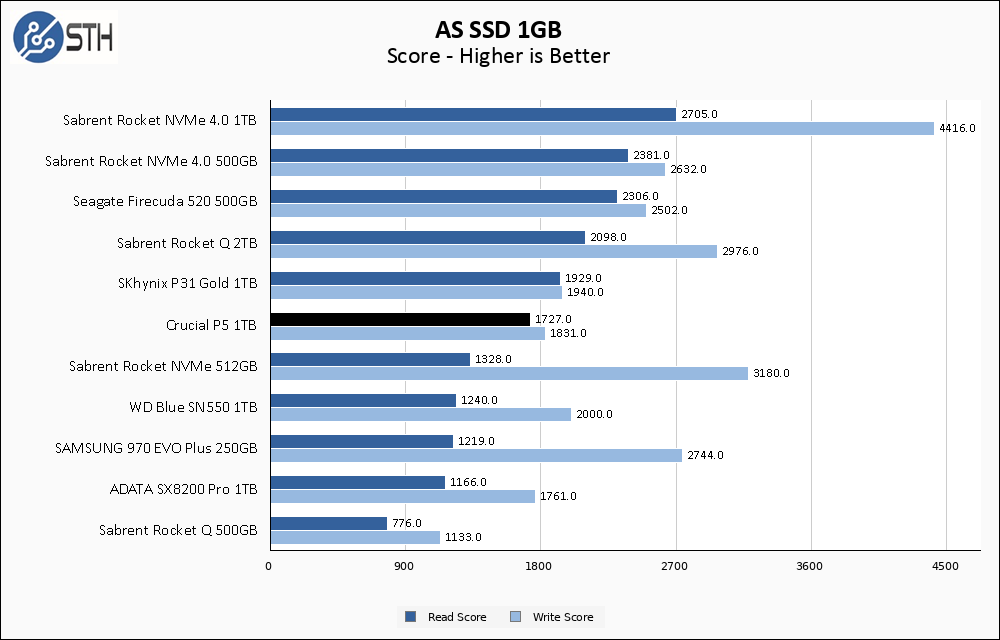
In the 1GB ASSSD test, the Crucial P5 1TB marks another solid performance and victory over the WD and ADATA drives. This test also marks the closest performance the Crucial P5 manages to achieve compared to the class-leading SK hynix Gold P31.
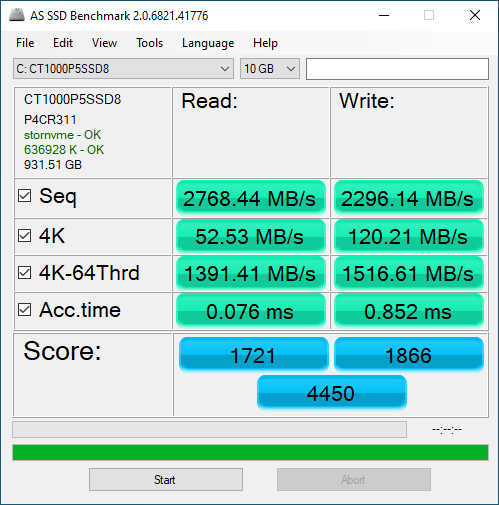
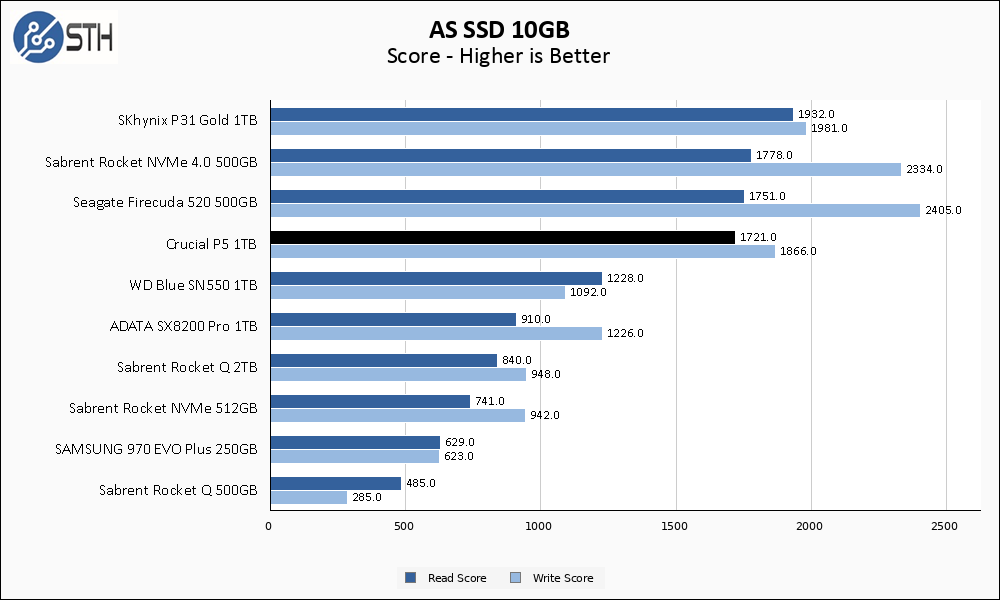
Finally, the Crucial P5 1TB continues to hold performance on the larger test sets, and turns in an overall read score that is actually competitive with some of the smaller PCIe 4.0 NVMe drives we have tested. This score is largely due to the very good results on the highly threaded 4K subtest.
SPECworkstation, thermals, and our conclusion are up next.




So, balanced read/write performance, tolerates a wide variety of data sizes, and doesn’t degrade with multiple threads. Sounds like the controller was being built for general server use. If a similar drive were built with higher endurance and power protection, how would it fare in that arena?